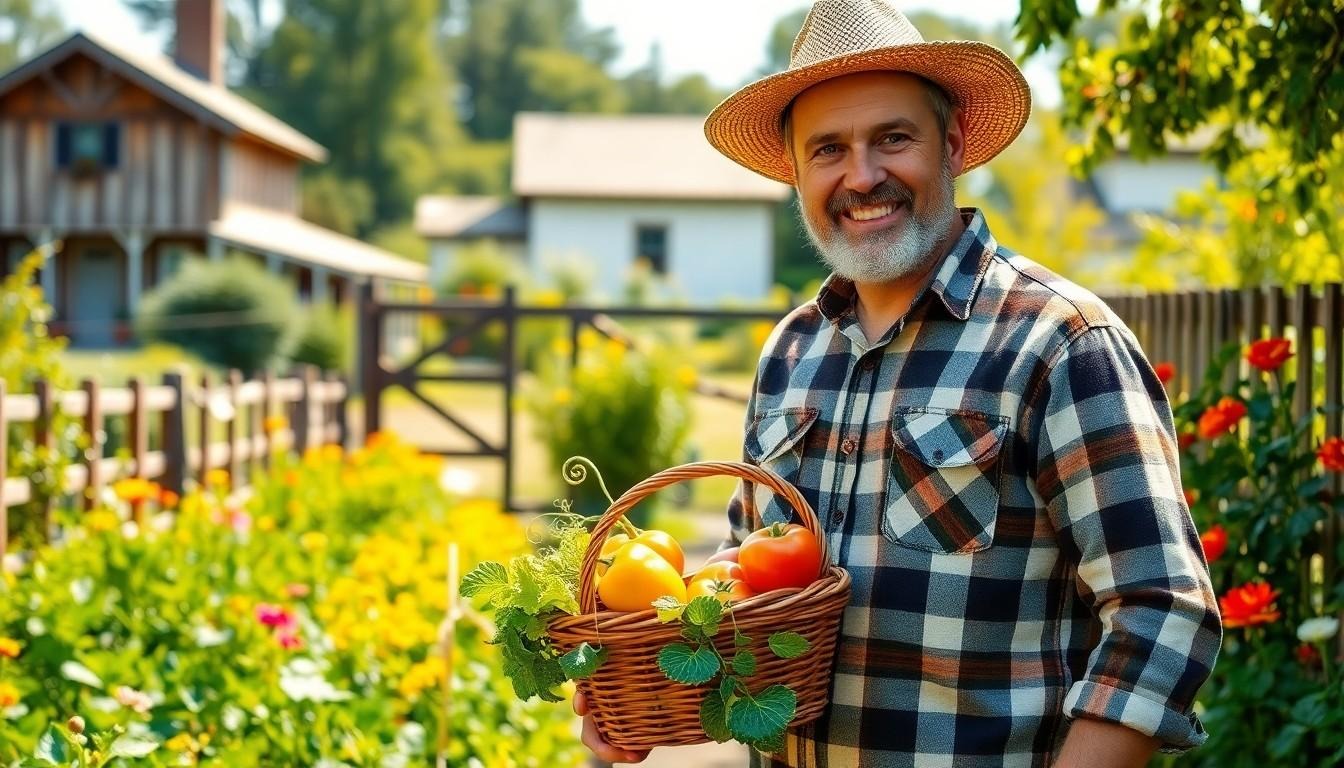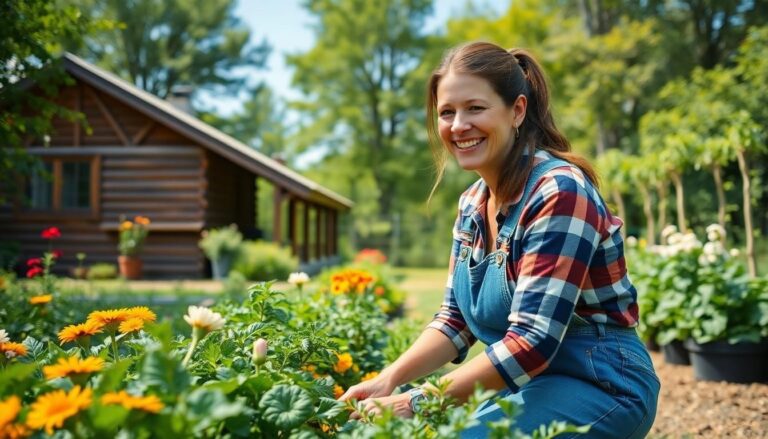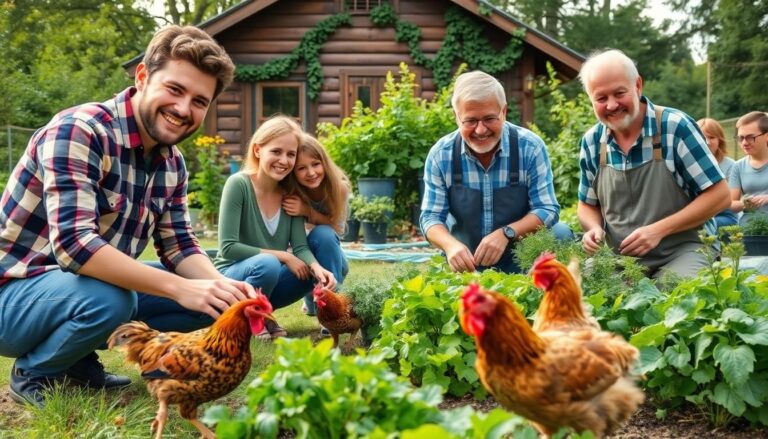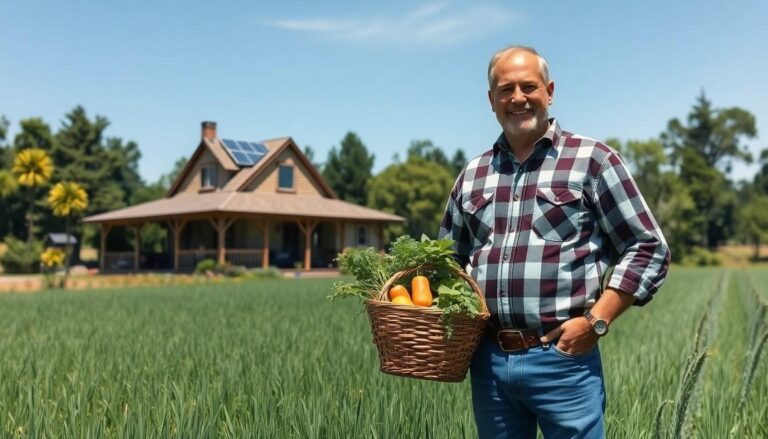Ever dreamt of ditching the grocery store and living off the land? Homesteading might just be your ticket to a life filled with fresh veggies, happy chickens, and maybe even a goat named Gary. It’s not just about growing your own food; it’s about embracing a lifestyle that reconnects you with nature and gives you a sense of accomplishment that even the fanciest avocado toast can’t match.
How to Start Homesteading
Homesteading encompasses a lifestyle choice focused on self-sufficiency, sustainability, and a close connection to nature. Individuals engage deeply with their surroundings, growing food and possibly raising animals while crafting a fulfilling daily rhythm.
Definition and Purpose
Homesteading refers to the practice of cultivating land to achieve self-sufficiency. It allows individuals to produce food, manage resources, and live in harmony with the environment. The primary purpose includes creating a sustainable lifestyle that emphasizes minimal reliance on commercial systems. Individuals may seek to reduce their ecological footprint while enjoying the benefits of homegrown produce.
Benefits of Homesteading
Homesteading offers numerous advantages beyond basic self-sufficiency. First, it enhances physical health through the consumption of fresh, organic food. Second, it fosters mental well-being by encouraging outdoor activities and reducing stress. Third, it cultivates skills in gardening, animal husbandry, and food preservation. Financial savings often increase as homesteaders lower grocery bills through home production. Additionally, individuals experience a strong sense of accomplishment, gaining satisfaction from their efforts and achievements related to everyday living.
Preparing for Your Journey
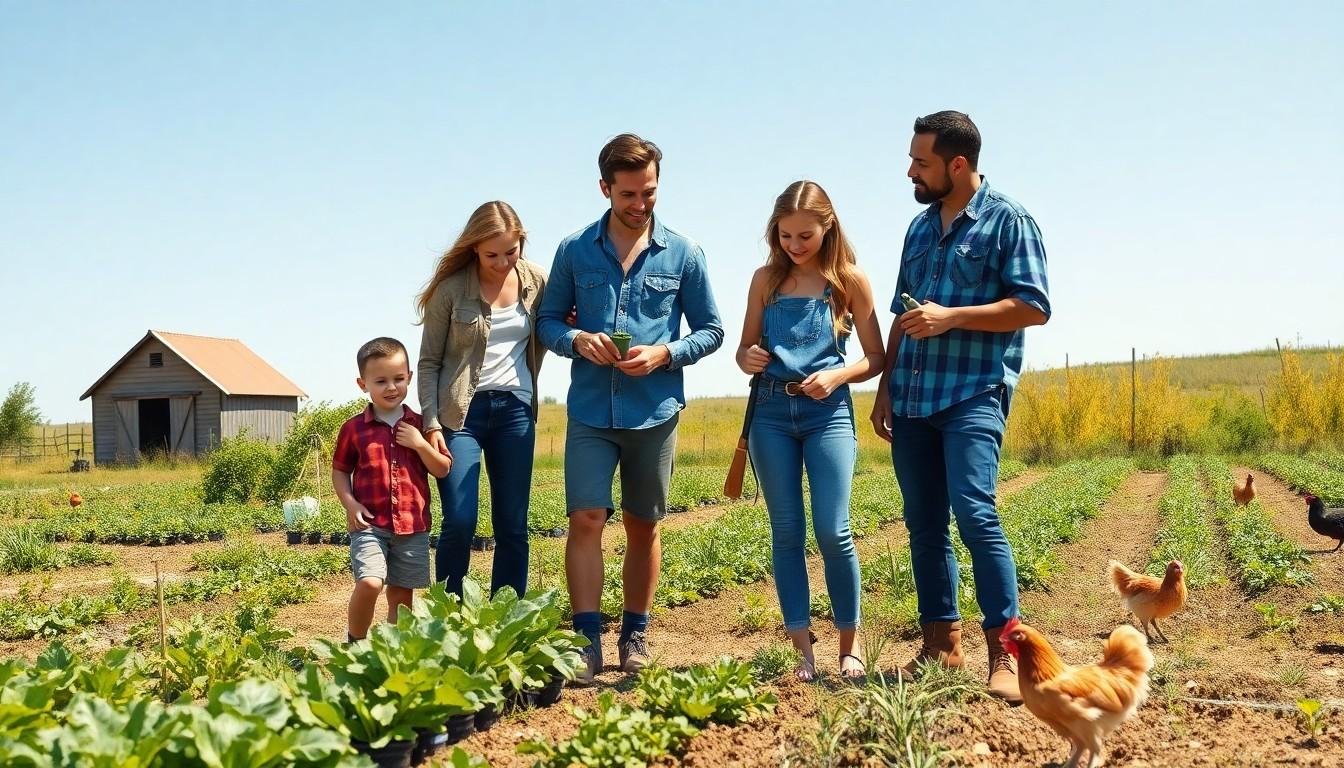
Starting a homesteading journey requires thoughtful preparation. Individuals must assess their current lifestyle and goals while creating a solid plan to ensure success.
Assessing Your Lifestyle and Goals
Evaluating lifestyle factors helps establish realistic homesteading objectives. People should consider their current routine, work commitments, and family dynamics. They also need to identify which aspects of homesteading resonate most, whether it’s gardening, animal husbandry, or renewable energy use. Understanding personal limitations assists in setting achievable milestones. Determining the available time for homesteading activities plays a crucial role in shaping future plans. Conversations with family members about interests and contributions promote shared responsibilities, fostering a collaborative atmosphere.
Creating a Homesteading Plan
Developing a comprehensive homesteading plan sets the foundation for success. First, individuals should list specific goals over short and long terms, including crop types and livestock preferences. Identifying resources, such as land size and soil quality, secures a better understanding of what can be accomplished. Incorporating budgets for equipment, seeds, and livestock aids in managing finances. Scheduling activities for planting, breeding, and harvesting aligns efforts with seasonal changes, ensuring productivity. Including educational resources—such as books, online courses, or community workshops—further enhances skills and knowledge, facilitating a smoother transition into homesteading.
Essential Skills for Homesteading
Homesteading requires several essential skills to thrive and succeed. Mastery of these skills contributes to self-sufficiency and a rewarding lifestyle.
Gardening and Food Production
Gardening forms the foundation of food production in homesteading. Starting with soil preparation ensures nutrient-rich ground for crops. Selecting suitable plants based on climate and soil conditions supports successful growth. Crop rotation practices prevent soil depletion and diseases, promoting healthier, more productive gardens. Techniques such as companion planting enhance biodiversity and deter pests naturally. Investing in preservation methods like canning and fermenting extends the harvest throughout the year. Experience with seasonal planting schedules optimizes yields and maintains variety. Learning about organic practices also promotes healthier produce and sustainable methods.
Animal Husbandry Basics
Animal husbandry plays a crucial role in maintaining homesteading sustainability. Starting with appropriate livestock selection, one can choose breeds that thrive in local conditions. Understanding basic needs, including food, water, shelter, and healthcare, ensures animal well-being. Routine care practices develop a deeper bond with animals and enhance productivity. Managing waste from livestock can improve soil health through composting. Implementing rotational grazing promotes land regeneration while maximizing forage use. Learning to handle common health issues and vaccinations for animals ensures a thriving farm. Skills in breeding and raising young stock contribute to growth and sustainability of the homestead.
Choosing the Right Location
Choosing a suitable location is crucial for successful homesteading. This decision impacts both sustainability and quality of life.
Factors to Consider
Evaluate land size based on personal needs. Consider the climate, which influences crops and gardening opportunities. Accessibility to water sources affects irrigation and livestock health. Take into account soil quality, which is vital for effective food production. Analyze proximity to resources like markets, health care, and services to support daily living. Assess local regulations governing land use, zoning, and homesteading practices. Understanding the community can provide networking opportunities and support.
Finding the Perfect Property
Identify the ideal property by visiting multiple locations. Look for land with diverse features, such as forests, fields, or streams, to enhance resilience and resources. Check for existing structures, which can influence expenses and time needed for improvements. Determine the availability of utilities, including electricity and water, that align with homesteading goals. Assess the price, ensuring it matches the budget for initial investments. Research the surrounding environment for potential hazards, including wildfires or flooding, to ensure a secure living space. Engage local real estate professionals for insights into market trends and opportunities.
Start Small and Expand Gradually
Starting small allows for manageable projects that build confidence in new homesteaders. Focusing on a few initial projects sets a strong foundation for future growth.
Initial Projects for Beginners
Gardening stands out as an excellent first step. Choosing easy-to-grow vegetables such as tomatoes, lettuce, and zucchini makes for a rewarding experience. Container gardening works well for those with limited space. Composting can enhance soil quality and reduce waste. Raising a few chickens provides eggs and teaches responsibility in animal care. Simple tasks like these foster skills necessary for homesteading, allowing beginners to gain experience and understanding.
Scaling Up Your Homestead
After gaining confidence, expanding homesteading projects becomes easier. Increasing vegetable varieties introduces new flavors and encourages crop rotation. Adding small livestock can supplement food sources, enhancing self-sufficiency. Constructing additional raised beds or integrating fruit trees expands production without overwhelming initial efforts. Engaging in community workshops or online resources helps beginners learn advanced techniques, ensuring continued growth. With gradual scaling, the homestead can evolve into a more sustainable and productive system.

